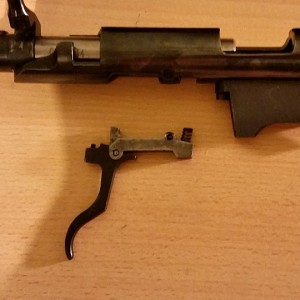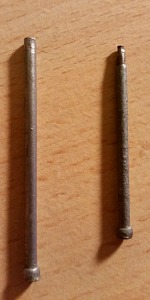Boyds gun stocks have long been a way for shooters to improve their favourite rifles. Whether it’s replacing a boring factory stock, modifying a sporterised milsurp rifle or finding a better fit for your shooting, there’s usually an option from Boyds that will fit the bill. For one of my rimfire project rifles it was a combination of improving the fit to my body, as well as increasing the aesthetic appeal.
When I first started working on JW-15s Boyds didn’t have anything available for them. Neither did anyone else. This is what got me into building my own stocks, which I’ve done a couple of. However, since then the good guys at Boyds have increased their range (as they always seem to be doing) and the JW-15 now has 5 different designs available.
Some of the designs are the same ones that much more expensive rimfire rifles come in, such as Savage’s Mark II BSEV and BTVS. Of course, the amount of money you could spend customising a JW-15 is probably about the same cost as buying a much better rifle – but where’s the fun in that?
While the Barracuda and SS Evolution are popular rimfire gun stocks that you can see on most ranges, strapped to a Ruger 10-22, the design I like most for the relatively long barrel on my JW-15 is the Pro Varmint, which seems to be the same stock the Savage Mark II TR sports. However, the black textured paint isn’t my cup of tea, so I opted to pay an extra US$15 to go for the Pepper Laminate instead. Visually, the stock is outstanding and I love the look.
Features of the Pro Varmint stock
Standard features include a sling stud under the base of the butt and two studs towards the front of the fore-end, one of these obviously for mounting attachments such as a bipod.
The stock is much heavier and more solid than the synthetic (i.e. plastic) stock the JW-15S comes in and makes it feel less like a toy and more like a real rifle. It’s also better suited to the average New Zealander’s length of pull.
The inletting is good and is done to Boyds’ house action. Obviously there is variation in rifles, probably more so in Norinco’s case, so yours may require some extra finishing. I found I had to relieve a couple millimetres of material where the recoil lug sits, which was not a big deal at all.

The barrel channel is extra deep, decreasing weight and ensuring a free floating barrel. You may need to do some fine sanding to make sure your barrel is free-floating, but mine was fine. The fore end also has a nice swell, so it fits perfectly in your hand.
There are also plenty of optional extras, including different finishes, varying lengths-of-pull, custom recoil pads and even laser engraving or chequering.
Downsides to the Pro Varmint stock
There aren’t many, but there are some. Because of the variations in rifle manufacture, you could find slight fitting and finishing is needed in order to get a solid fit for your action. Keep in mind that Norinco weapons have been banned from the states for a long time, so the action they have is probably very old. However, as I mentioned above, there was not much needed to get mine fitted snugly.
What I will probably do (and what I would recommend to anyone going for high accuracy) is bedding the rifle with Terminal Ballistics bedding compound or something similar. I’ve bedded two actions with Nathan Foster’s compund, and loved the result.
When shipping to NZ, Boyds has an order limit of US$100 (before postage). This is because of legal complications with US Customs. Unfortunately, it limits your ability to go for optional extras as some stocks are $99 already. The Pro Varmint was $75, and I changed to the Pepper Laminate for $15. Options like the adjustable comb height ($60) are just out of your reach with the $100 limit.
I can’t remember the cost of postage, but it’s still worthwhile when you consider how much Boyds stocks cost to buy over here. What you could do is buy it when you’re on a trip to the States or ask family/friends over there to buy it for you and send it over. Don’t try NZ Post’s YouShop, as they won’t ship rifle parts. You’ll end up paying for return postage to the supplier. Also, they charge by volumetric weight, which can end up costing a lot more than you expect.
I did have one minor issue with my rifle stock, and that was a tiny chip near the tang. It’s not a deal-breaker, and certainly not worth the effort/cost involved in sending it back for a replacement.
The final verdict
I’m extremely happy with my Boyds stock. As I mentioned before, I’m getting another one soon for a different rifle, so that should say a lot. Although there are minor detractors, these can be addressed fairly easily.
I would definitely recommend finding an alternative method of postage so that you can get all of the great features that your heart desires, and I would also advise that you bed your new stock.










